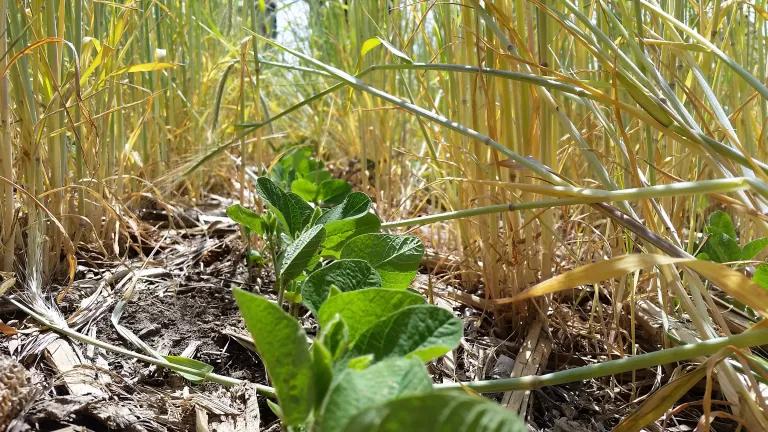Climate-Ready Soil: How Cover Crops Can Make Farms More Resilient to Extreme Weather Risks

Sadly, droughts, heavy downpours, and floods are growing increasingly common in many parts of the country due to climate change. The economic threats to agriculture from these growing risks are greatest in the nation's leading farming states. The value of the agricultural sector in the top 10 states alone was more than $250 billion in 2014, which represents more than half of the entire U.S. total. Climate change and extreme weather will likely have detrimental impacts on crop production, but farmers can use cover crops and other soil stewardship practices to make their farms more resilient to the climate change impacts already being felt and those likely to come in the years ahead. Such practices can also help to reduce and capture the greenhouse gas emissions that contribute to climate change.
NRDC examined the carbon capture and water-holding benefits of soil stewardship methods to increase soil organic matter in the 10 highest-value-producing agricultural states in the United States. This analysis estimates that using cover crops on just half of the acres devoted to the nation's two most ubiquitous crops—corn and soybeans—in those top 10 states could help capture more than 19 million metric tons of carbon each year and help soils retain an additional trillion gallons of water.
Despite the many benefits of cover crops, only 3 to 7 percent of farms in the United States use cover crops, and only 1 percent of total cropland nationally is planted with cover crops. NRDC supports the expanded use of cover crops on U.S. farms and believes that farmers who use them should receive a discount on their crop insurance, just as safe drivers can get discounts on their car insurance. NRDC is working on a proposal to offer actuarially sound crop insurance premium discounts to farmers who use cover crops to reduce their risk of crop loss. By investing in cover crops and healthy soil, we can help ensure a reliable food supply for the nation even in the face of more extreme weather and climate risks.



